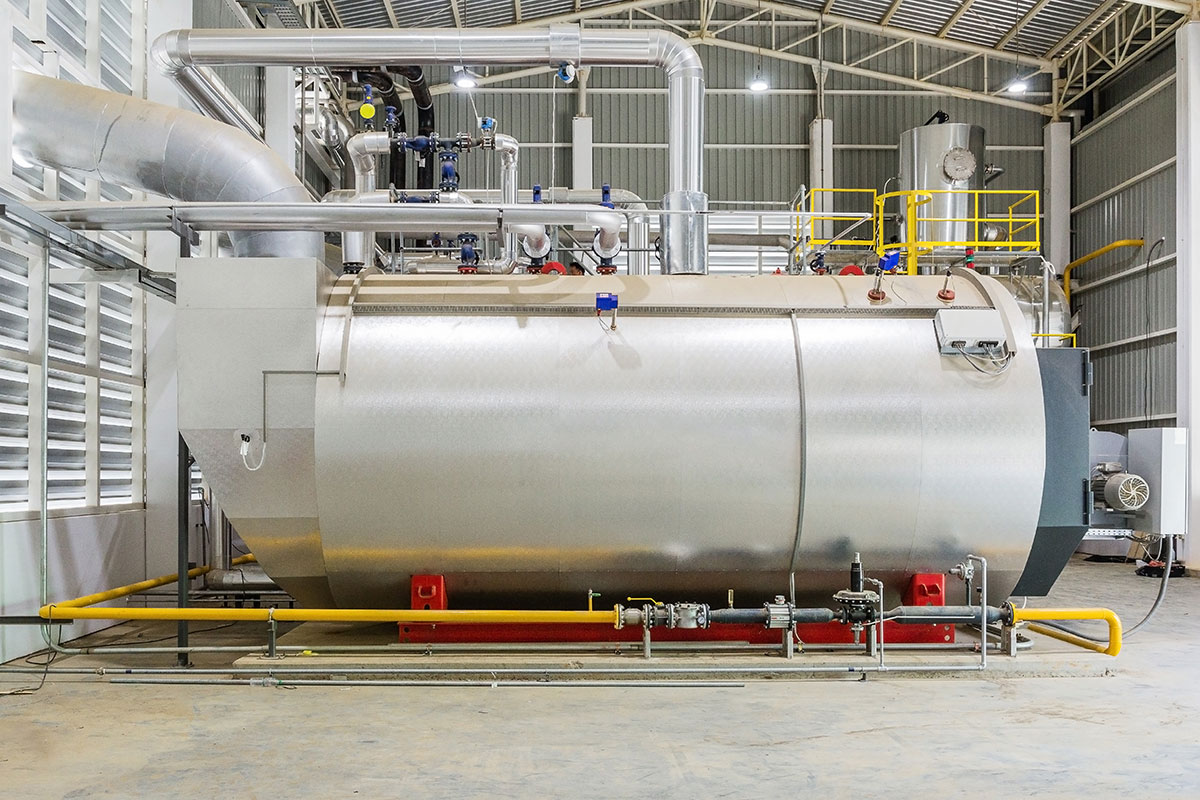Why Boiler Water Treatment Matters
Boiler systems require proper water treatment to prevent corrosion, scale buildup, and efficiency losses. Without the right chemical program, facilities risk equipment failure, reduced steam quality, and increased operational costs.
This guide provides an overview of key boiler water treatment chemicals, their functions, and best practices for application.
1. Oxygen Scavengers – Protecting Against Corrosion
Dissolved oxygen in boiler water is a leading cause of corrosion, which weakens metal surfaces and leads to system failures. Oxygen scavengers remove oxygen before it can cause damage.
Common Oxygen Scavengers:
| Chemical Type | Function | Best For |
|---|---|---|
| Sodium Sulfite / Sodium Bisulfite | Reacts with oxygen to form sulfate, preventing pitting corrosion | Low- and medium-pressure boilers |
| DEHA (Diethylhydroxylamine) | Volatile scavenger that removes oxygen and passivates metal surfaces | High-pressure systems, food-grade applications |
| Erythorbate-based Scavengers | Environmentally friendly, non-toxic oxygen removal | Steam systems with food contact requirements |
2. Scale & Deposit Control Agents – Preventing Mineral Buildup
Scale deposits from calcium, magnesium, iron, and silica reduce heat transfer efficiency, increase energy consumption, and lead to equipment failure. Scale inhibitors prevent these deposits from forming.
Types of Scale & Deposit Control Agents:
- Phosphates – React with calcium to form non-adherent sludge, which can be removed via blowdown.
- Polyphosphates – Sequester calcium and magnesium ions, preventing scale formation.
- Polymers & Dispersants – Keep suspended solids from depositing on heat transfer surfaces.
- Chelants (EDTA, NTA) – Bind to metal ions, preventing them from forming scale.
3. Alkalinity Builders & pH Control – Preventing Acidic Corrosion
Maintaining proper pH and alkalinity levels is essential for corrosion control and system stability.
Key Alkalinity Builders & pH Adjusters:
| Chemical Type | Function |
|---|---|
| Sodium Hydroxide (NaOH) | Raises boiler water pH to prevent acidic corrosion |
| Sodium Carbonate (Na₂CO₃) | Buffers alkalinity and neutralizes acidic contaminants |
| Amines (Neutralizing & Filming) | Protect condensate return lines from acid attack |
| Tannins | Natural corrosion inhibitor that also helps with scale control |
Best Practice: Overdosing alkalinity builders can lead to foaming and carryover, so pH should be monitored regularly.
4. Condensate System Protection – Reducing Acidic Corrosion
Steam returning to the boiler system condenses, but CO₂ absorption can create carbonic acid, which corrodes return lines. Condensate treatment chemicals help neutralize acidity and protect piping.
Types of Condensate System Treatments:
- Neutralizing Amines – Increase pH to counteract carbonic acid.
- Filming Amines – Create a protective barrier on pipe surfaces to prevent corrosion.
Best Practice: Condensate treatment should be selected based on steam pressure, condensate return rates, and system materials.
5. Sludge Conditioners & Dispersants – Managing Suspended Solids
Sludge forms when precipitated minerals and suspended solids settle in boiler water. Without proper treatment, sludge can block heat transfer surfaces and reduce efficiency.
Common Sludge Conditioners & Dispersants:
- Polymeric Dispersants – Prevent solids from settling, keeping them in suspension for easy removal.
- Chelants (EDTA, NTA) – Bind with metals to prevent scaling and sludge accumulation.
Best Practice: Regular blowdown removes suspended solids and prevents sludge buildup.
Download the Complete Boiler Water Chemicals Guide
Want a deeper dive into boiler water chemicals? Download our full guide to learn about:
- Key chemical categories & their functions
- How each chemical supports system performance
- Where each treatment type is applied in a boiler system
